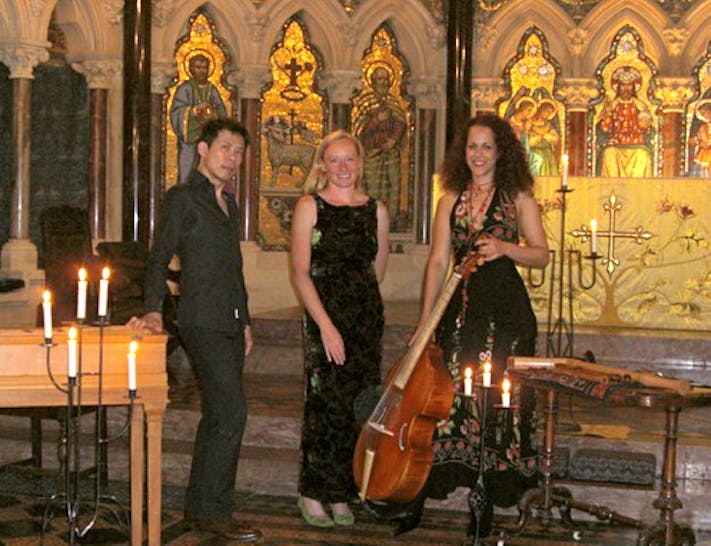Charivari Agreable translates as something like "pleasant tumult", derived from an early 18th century treatise on musical accompaniment; on the face of it an odd description of a style of music we would today call highly structured. Under its founder and harpsichordist Kah-Ming Ng, the group has been going for more than a dozen years now with a chronological remit spanning the Renaissance to the early Classical eras, ie late 16th to late 18th century music. Its Early Music Festival comprehends another 20 dates between now and 18th August in Exeter College chapel.
This programme of Baroque works, Capriccio Veneziano, focused on the music of Antonio Vivaldi and his predecessors in Venice and the ensemble consisted of Mr Ng on harpsichord, violinists Oliver Cave and Sam Kennedy, and cellist Lucia Capellaro. They were playing period instruments strung with gut, as Mr Ng told us, joking that "quite a number of sheep have been sacrificed for this programme" – a remark perhaps as notable for its hyperbole as for its doubtful taste.
The opening piece by Giovanni Legrenzi established the pattern for the evening - swirling violin patterning as the dominant voice, with the material arranged in mini-concerto form and undergoing quick changes of tempo. He was succeeded by the hyper-talented amateur, Tomaso Albinoni, famous today for his ubiquitous Adagio in G minor which I recently heard blaring from the window of a white van stuck in a jam on the M25, courtesy of Classic FM. A lot of his manuscript work was lost when Dresden was fire-bombed by the RAF in February and March 1945. The violins were zingy and stringy of tone, with warmth aplenty too, and some subtly ear-tickling ornamentation. The cello danced the bass-line along merrily. We moved on to trio sonatas by Corelli and Dario Castello, the latter a shadowy figure who seems to have perished in the great plague of Venice in 1630. Strictly worked polyphonic sections alternated with dramatic recitatives over basso continuo, in keeping with the title of "in stil moderno".
Even on this wet evening and despite the great height of the nave roof, there was a wonderfully cosy atmosphere to this concert as the audience, most of them tourists, many under age 20 and numbering 110 or so sat in the choir stalls. The candelabra chandeliers above us and the candles in the apse cast a creamy light that perfectly chimed with the modern copy of a Dutch 17th century 'figures in a landscape', something in the style of Meindert Hobbema and painted by a fan of Charivari Agreable, that adorns the lid of Kah-Ming Ng's harpsichord. This, so he told me, is a model of a 1639 Flemish instrument, the original of which is to be found in the Russell Collection in Edinburgh. The Victorian chapel interior has strong affinities with that of La Sainte-Chapelle on Île de la Cité in Paris, with its 1,113 stained glass windows. The Exeter glass is hardly as extensive and 700 years younger, yet the 270° vitreous surround is most striking; it includes a fine 'Paul Struck Down on the Road to Damascus', and a 'Raising of Lazarus' sequence. The total effect of this stately baroque music from Venice swirling around us in this setting and with the rain beating down outside was a treat, just the kind of experience that affirms the supremacy of live music over its recorded form.
The programme concluded with a double helping of Vivaldi: a cello sonata with harpsichord continuo. Lucia Capallero's cello parts had made a relatively subdued effect all evening, never obtruding themselves above their fiddle companions, and even here when the cello is released to play solo, the score calls for something quietly tasteful rather than the boom and throb of the classical and romantic musical eras to come. The final La Folia variations were comfortably the most familiar of the works played, a typically energetic Vivaldian treatment of a core motif, exhaustively elaborated and decorated, the tempo veering from allegro to largo and back to vivace.




 Part of
Part of